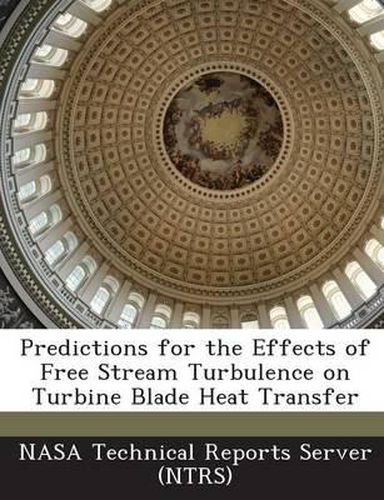Readings Newsletter
Become a Readings Member to make your shopping experience even easier.
Sign in or sign up for free!
You’re not far away from qualifying for FREE standard shipping within Australia
You’ve qualified for FREE standard shipping within Australia
The cart is loading…






An approach to predicting the effects of free stream turbulence on turbine vane and blade heat transfer is described. Four models for predicting the effects of free stream turbulence were in incorporated into a Navier-Stokes CFD analysis. Predictions were compared with experimental data in order to identify an appropriate model for use across a wide range of flow conditions. The analyses were compared with data from five vane geometries and from four rotor geometries. Each of these nine geometries had data for different Reynolds numbers. Comparisons were made for twenty four cases. Steady state calculations were done because all experimental data were obtained in steady state tests. High turbulence levels often result in suction surface transition upstream of the throat, while at low to moderate Reynolds numbers the pressure surface remains laminar. A two-dimensional analysis was used because the flow is predominately two-dimensional in the regions where free stream turbulence significantly augments surface heat transfer. Because the evaluation of models for predicting turbulence effects can be affected by other factors, the paper discusses modeling for transition, relaminarization, and near wall damping. Quantitative comparisons are given between the predictions and data.
$9.00 standard shipping within Australia
FREE standard shipping within Australia for orders over $100.00
Express & International shipping calculated at checkout
An approach to predicting the effects of free stream turbulence on turbine vane and blade heat transfer is described. Four models for predicting the effects of free stream turbulence were in incorporated into a Navier-Stokes CFD analysis. Predictions were compared with experimental data in order to identify an appropriate model for use across a wide range of flow conditions. The analyses were compared with data from five vane geometries and from four rotor geometries. Each of these nine geometries had data for different Reynolds numbers. Comparisons were made for twenty four cases. Steady state calculations were done because all experimental data were obtained in steady state tests. High turbulence levels often result in suction surface transition upstream of the throat, while at low to moderate Reynolds numbers the pressure surface remains laminar. A two-dimensional analysis was used because the flow is predominately two-dimensional in the regions where free stream turbulence significantly augments surface heat transfer. Because the evaluation of models for predicting turbulence effects can be affected by other factors, the paper discusses modeling for transition, relaminarization, and near wall damping. Quantitative comparisons are given between the predictions and data.